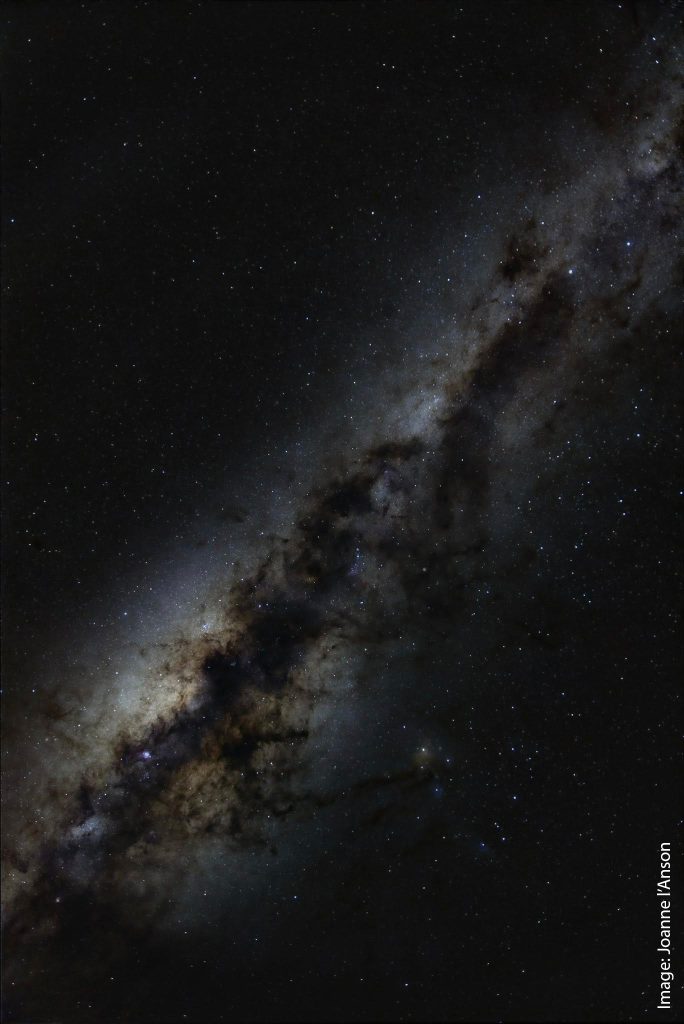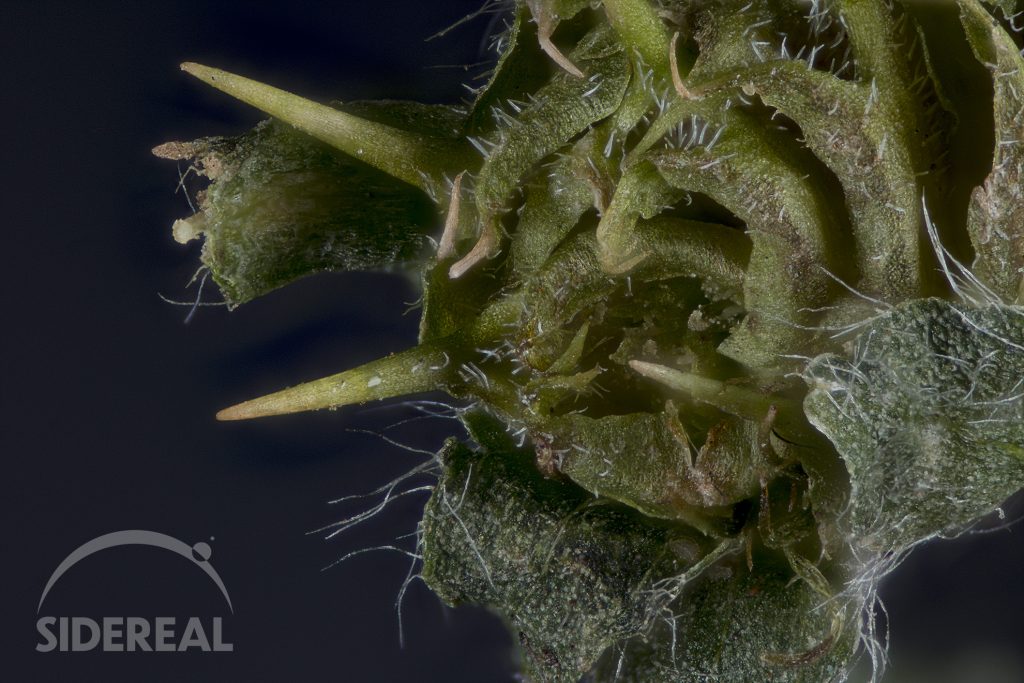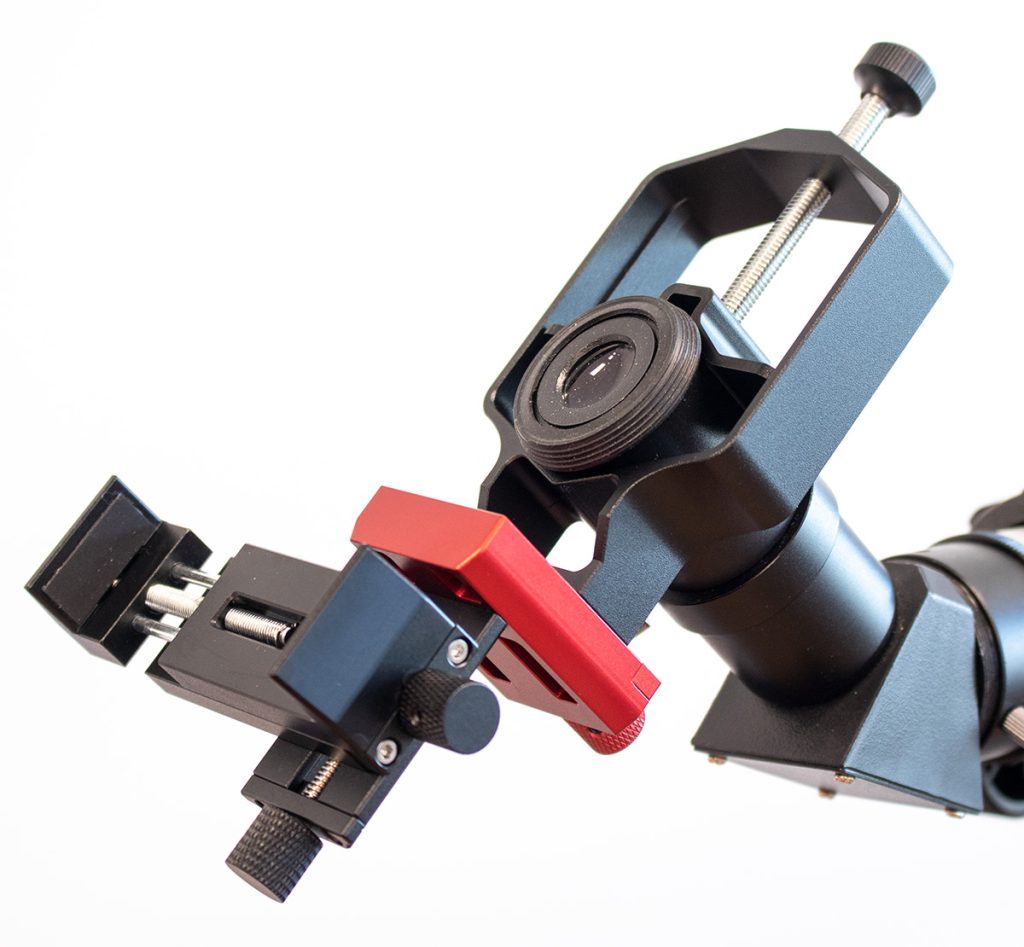Asteroids, for the most part, are lonely rocks orbiting quietly in the solar system. They orbit the Sun in ellipses, meaning that when measured from the Sun, sometimes they’re nearer and sometimes they’re further away. Some asteroids have a near point (a perihelion) and a far point (an aphelion) that are both inside the Earth’s orbit. Others have near and far points that are both outside Earth’s orbit. A lot of these ones stay in a belt between the orbits of Mars and Jupiter.
But some asteroids have orbits that cross the orbit of the Earth. We normally call these Near-Earth Objects (NEOs).
Most NEOs have orbits that are tilted differently to Earth’s orbit. But some have orbits that come very close to ours. Being in the same place at the same time is a worry: Earth has had asteroid impacts before, and let’s just say it doesn’t make a pleasant experience for Earth-dwellers.
For example, another NEO, Apophis, is going to pass within 32,000 kilometres – astronomically speaking, that’s a hair’s breadth – of the Earth in 2029. That’s less than one tenth of the distance of the Moon, and closer than geostationary satellites. This won’t pose a threat to the Earth, but it furrows the brows of scientists.
Is there a way for us to defend ourselves from an asteroid impact? One thing we can try is to move asteroids – that is, change their orbits around the sun. If we have a long preparation time, and we know the precise orbit of an asteroid that threatens the Earth, it might be possible to bump the asteroid very slightly – just enough so it misses the Earth.
The Double Asteroid Redirection Test (DART) project is a “proof of concept” for just this type of exercise. A small asteroid called Didymos, which is safely far from Earth, is being orbited by an even smaller asteroid by the name of Dimorphos. In late September, Dimorphos will be hit by a spacecraft, the intention being that the collision will change the relative orbits of the two asteroids.
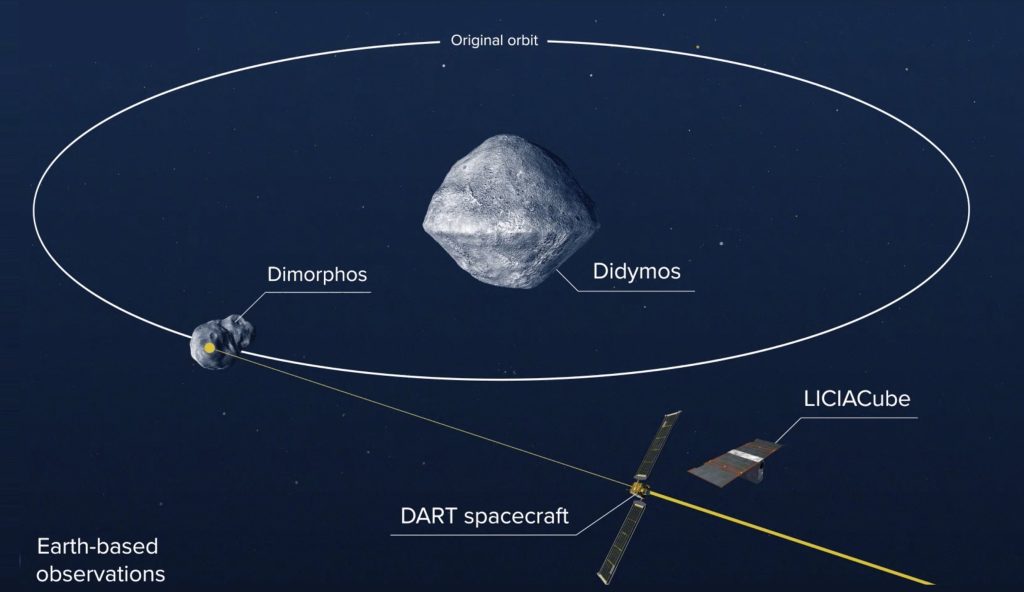
In order to measure the deflection (which will be seen as a change of orbit of Dimorphos and Didymos around each other) we need exquisitely precise observations. Most of the observations we have are of the brightness of the pair, and these measure the time the two take to orbit each other. This will show enough to tell if the test was a success, but they don’t measure the actual position of the asteroids.
But there is a way we can get supremely precise observations of the position of an asteroid.
From time to time, asteroids pass in front of distant stars. These stars are so far away that they are effectively a “point source” like a laser, so when the asteroid moves in front, the star’s light shuts off all at once rather than fading away. This lack of fading means we can get, even from the Earth, positional information that’s precise enough. It’s all a question of timing.
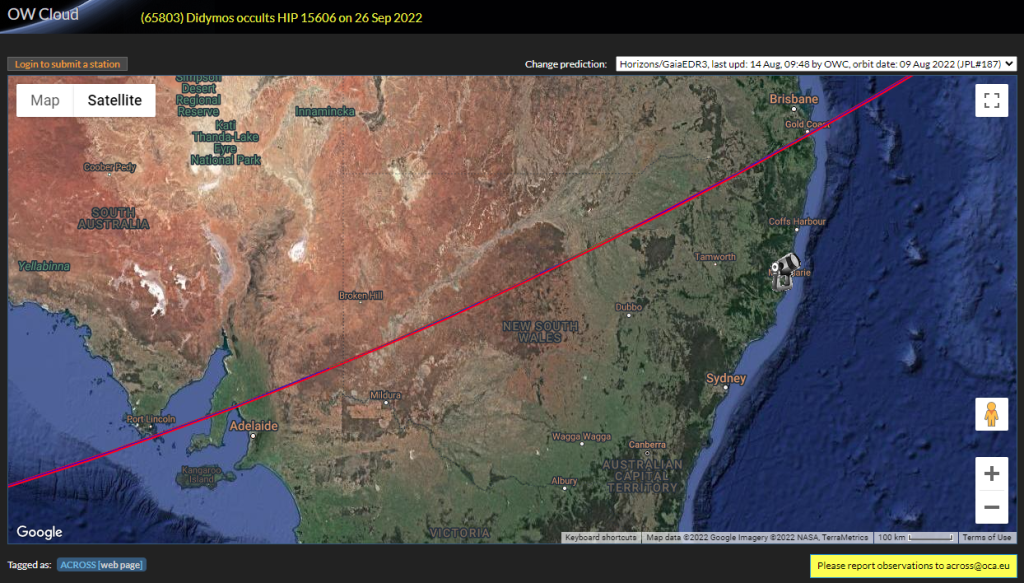
As it happens, a magnitude 8 star known as HIP 15606 will cast the shadow of Didymos over parts of Australia on 26 September. At 18:31 (we’re using UTC because the shadow crosses time zones), the shadow will pass south of Port Lincoln in South Australia. It will pass to the north of Adelaide, between Broken Hill and Mildura, north of Dubbo and Tamworth and pass over the Gold Coast at around 18:37.
To observers in exactly the right location, with the right equipment, HIP 15606 will disappear for about one tenth of a second. That’s very tough to detect, but with the right equipment, and the right experience, it’s doable.
Anyone up for an outback road trip? You’ll need a good rig with a large aperture that can find and observe HIP 15606. You’ll also need a QHY174M-GPS, a camera with a built-in GPS for accurate timing.
With a better understanding of the orbits of Didymos and Dimorphos, NASA can get a more accurate estimate of how DART has changed the orbits. This will give them more information about the ability humans have to deflect asteroids. In turn, this may put humanity in a better position to avoid a “Very Bad Day”.
If you’d like more information about the DART mission, NASA’s web page is at https://www.nasa.gov/planetarydefense/dart/dart-news.
But if you want to actually get involved, there’s a Facebook Group called W4N2H: Adventures in Occultation Timing at https://www.facebook.com/groups/443547812746432. If you’re curious, “W4N2H” stands for “waiting for nothing to happen”. Occulting observers do a lot of this.

